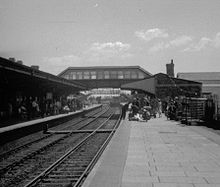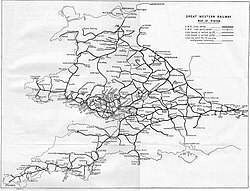Llanelli riots of 1911

The Llanelli riots of 1911 were a series of events precipitated by the
The incident was highly politically sensitive, as the
Strike and mass picket
The two-day industrial action took place on Friday 18 and Saturday 19 August 1911.
Shootings

On 19 August, during the negotiations, a train containing
Riot
The troops action sparked not only the strikers, but also other residents of Llanelli into a day of widespread disorder and rioting. One man was killed when he attempted to use dynamite to open an armoured freight carriage, unaware that the cargo was munitions, resulting in a massive explosion. On the following day three more people died from injuries sustained in the blast.[2] Local historian John Edwards believes a conspiracy between Liberals and the chapels promoted shame though his aunt referred to the Worcesters as "the murderers". As such the riots were rarely spoken of in the town, such that most of its later residents were unaware of one of the more significant events in its history.[2]
See also
- 1911 in Wales
- Timeline of Llanelli history
- National coal strike of 1912
- Tonypandy riots, 1910–11
References
- ISBN 978-0-521-53053-8.
- ^ a b c d e f g Neil Prior. ""Llanelli's 'forgotten' riot - 100 years ago"". BBC Wales. Retrieved 7 December 2018.
- ^ Ben Johnson. "The Llanelli Railway Riots". historic-uk.com. Retrieved 7 December 2018.
- ^ Llafur (1994). Llafur: journal of Welsh labour history. Vol. 6. Llafur (Society).
- ^ Robert Griffiths, "1911 When the State fired on civilians", Socialist History Society
- ISBN 0719542448.
- ^ Michael Portillo. "1913: The Year Before". BBC. Retrieved 7 December 2018.
- ISBN 978-0-7546-7346-0.
Further reading
- Edwards, John (2010). Remembrance of a Riot: The Story of the Llanelli Railway Strike Riots of 1911. BPR Publishers. ISBN 978-0-9550476-2-6.
- Green, Penny (1990). The Enemy Without: Policing and Class Consciousness in the Miners' Strike. New Directions in Criminology. Open University Press. p. 235. ISBN 978-0-335-09274-1.

